Hey there, fellow pain warrior! Are you tired of that nagging sciatic nerve pain putting a damper on your groove? Well, you’re in luck! Today, we’re going to explore some easy ways to relieve sciatica pain and get you back to feeling like your fabulous self. So, let’s dive right in and kick that pain to the curb!

What is Sciatica
Before delving into potential solutions, it’s essential to gain a comprehensive understanding of discomfort. This prevalent condition originates from the irritation or compression of the sciatic nerve, an extensive nerve extending from the lower back down through the legs. The sciatic nerve plays a pivotal role in connecting the spinal cord with the leg muscles, facilitating both motor and sensory functions.
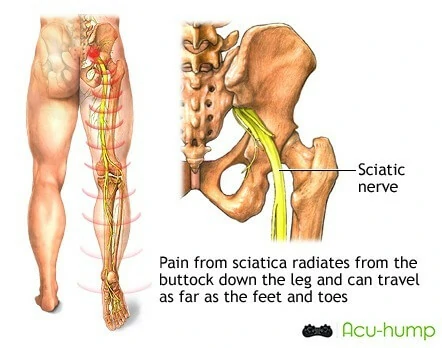
What is symptoms?
The discomfort manifests through a range of distressing symptoms, encompassing persistent pain, numbness, and tingling sensations. These sensations typically radiate along the pathway of the sciatic nerve, causing discomfort that can significantly impede daily activities. Simple tasks such as walking, sitting, or even standing can become formidable challenges when contending with pain.
The pain associated with sciatica often varies in intensity, ranging from a mild, dull ache to excruciating jolts of pain that make routine movements seem daunting. The extent of the pain is often influenced by factors such as the degree of nerve compression, the presence of underlying medical conditions, and an individual’s overall health.
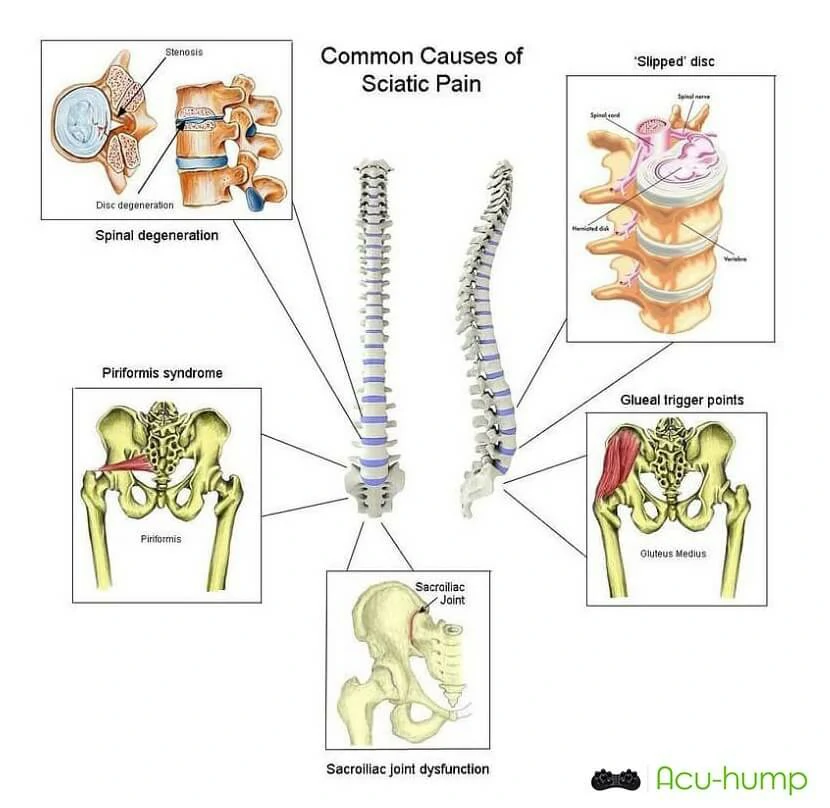
Moreover, it is frequently linked with underlying issues, such as herniated discs, spinal stenosis, or even muscular imbalances, all of which can exert pressure on the sciatic nerve. Understanding these root causes is crucial in devising effective strategies for managing and relieving sciatica pain. By addressing the underlying triggers, it’s possible to not only find relief from the immediate symptoms but also to prevent recurrent bouts.
Sciatica poses a significant hurdle for those affected, disrupting daily life due to the persistent pain, numbness, and tingling it brings. By comprehending the intricate interplay between the sciatic nerve, spinal structures, and potential sources of compression, individuals can be better equipped to explore a range of targeted treatments and lifestyle adjustments that can pave the way towards enhanced well-being and restored functionality.
Easy Ways to Relieve Sciatica Pain
Home Remedies
When grappling with the discomfort, several simple yet effective home remedies can provide much-needed relief:
Heat and Cold Therapy
Harnessing the power of temperature contrast through alternating applications of ice packs and heating pads can yield remarkable results. Cold packs help to minimize inflammation by constricting blood vessels, while heat pads relax tense muscles and improve blood circulation. Finding the optimal balance between these treatments can be crucial in alleviating sciatic nerve pain and facilitating the body’s natural healing process.
Over-the-Counter Pain Relievers
Over-the-counter nonsteroidal anti-inflammatory drugs (NSAIDs) and acetaminophen can serve as valuable tools in managing the discomfort associated with sciatica. NSAIDs like ibuprofen help to reduce inflammation and alleviate pain, while acetaminophen can be effective in reducing pain sensations. However, it’s imperative to exercise caution and consult a medical professional before initiating any medication regimen. Physicians can offer personalized guidance based on an individual’s medical history and existing health conditions, ensuring safe and suitable usage.
Exercises and Stretches
A multifaceted strategy to relieve sciatica pain integrates a variety of exercises and stretches, each targeting distinct areas to promote relief, flexibility, and holistic well-being. Consider these diverse techniques:
Gentle Stretching Exercises
Engaging in seated spinal twists and knee-to-chest stretches can prove immensely beneficial. Seated spinal twists gently rotate the spine, helping to alleviate tension and reduce discomfort. Knee-to-chest stretches involve bringing one knee at a time towards the chest, facilitating a release of tension in the lower back and promoting relaxation.
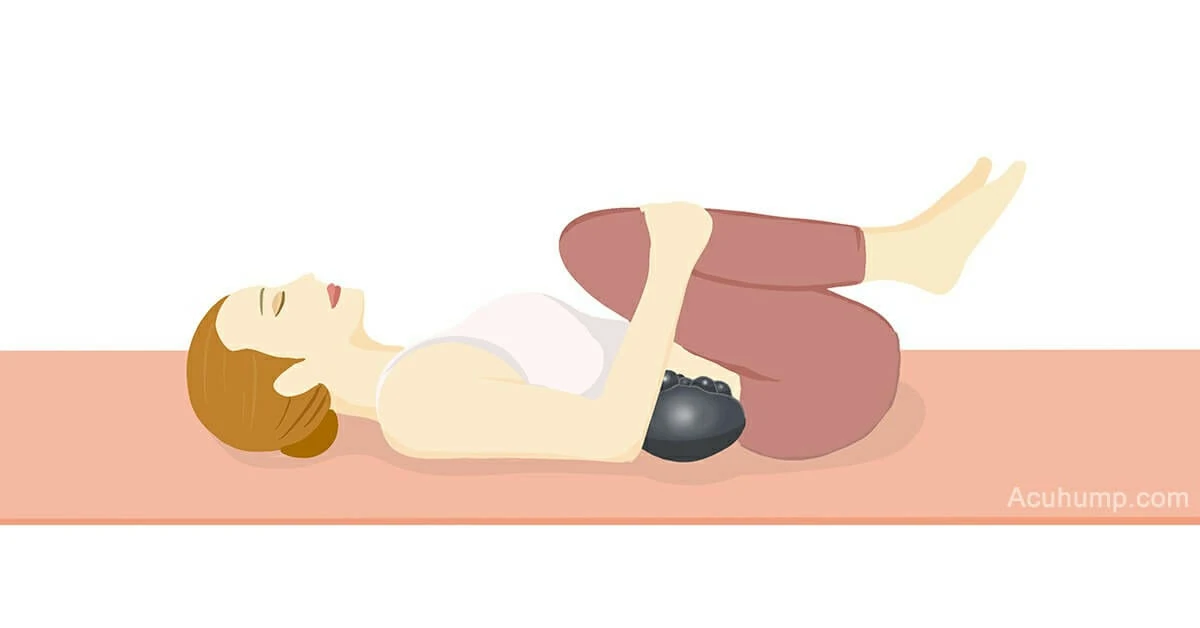
Infuse your routine with the revitalizing effects of the Acu-hump technique. This innovative approach combines stretching with acupressure massage, offering a unique experience that relaxes the lower back and hips.
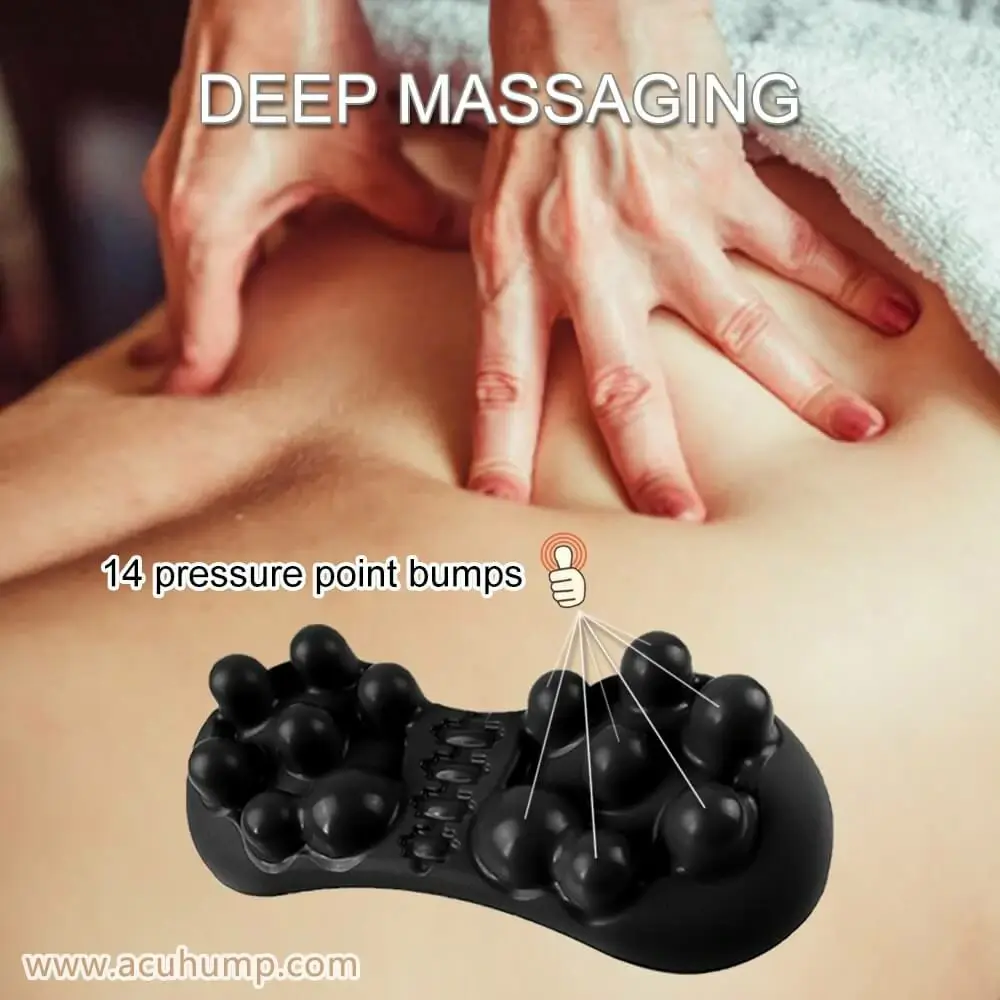
By leveraging the Acu-hump, you simultaneously engage in dynamic sciatic nerve stretches while applying targeted pressure to acupressure points. This dual-action method provides a profound release of tension along the sciatic nerve pathway, contributing to comprehensive relaxation and relief.

Bring more oxygen and nutrients to your muscle
Strengthening Exercises
Building strength in key muscle groups can provide enhanced support for your spine. The bird-dog exercise, where you extend one arm and the opposite leg while maintaining balance, engages both your core and lower back muscles. Glute bridges, on the other hand, target the glutes and lower back, contributing to overall stability and improved posture.
Low-Impact Aerobic Exercises
Incorporating cardio into your routine can maintain your fitness without exacerbating sciatica pain. Activities like walking and swimming offer a cardiovascular workout while minimizing stress on the sciatic nerve. Walking promotes blood circulation and encourages flexibility in the lower back, while swimming provides a full-body workout in a supportive, buoyant environment.
Incorporating these exercises and stretches into your routine can gradually lead to improved mobility and diminished discomfort. However, it’s crucial to approach these activities with mindfulness and avoid overexertion. Consulting a healthcare professional or a physical therapist before starting any new exercise regimen is wise, as they can provide personalized recommendations based on your specific condition and fitness level. Remember, consistency is key – gradual progress can yield remarkable results in your journey towards sciatica pain management and improved well-being.
Lifestyle Changes
Incorporating meaningful lifestyle changes can significantly contribute to managing and preventing:
Maintaining Proper Posture
Cultivating an awareness of your posture during various activities is pivotal. Be it sitting, standing, or even lying down, ensuring your spine is aligned can play a crucial role in mitigating the risk of sciatica pain. Engaging core muscles and adopting ergonomic postures can provide ongoing support to your lower back, reducing the strain on the sciatic nerve.
Ergonomic Adjustments
Making subtle yet impactful modifications to your environment can yield substantial benefits. Crafting a workspace that promotes comfort and aligns with ergonomic principles prevents undue stress on the spine. Additionally, investing in supportive footwear, especially if you have a job that demands extended periods of standing or walking, can alleviate pressure on the sciatic nerve, enhancing overall comfort and well-being.
Weight Management
Nurturing a healthy weight through a balanced diet and regular exercise offers manifold advantages, including decreased pressure on the spine and sciatic nerve. Excess body weight can exacerbate sciatica pain by intensifying pressure on the lower back. By achieving and maintaining a healthy weight, you’re not only benefiting your overall health but also reducing the risk of sciatica-related discomfort.
Incorporating these lifestyle changes into your daily routine empowers you to take proactive steps in managing discomfort and enhancing your quality of life. Consistency is key, and it’s important to recognize that these changes can have a cumulative impact over time. Prioritizing posture, ergonomics, and weight management, along with the guidance of medical professionals, sets the stage for a holistic and effective approach to discomfort prevention and relief.
When to Seek Professional Help
Should your sciatica pain endure or intensify, seeking guidance from a healthcare professional becomes imperative. Beyond the realm of temporary discomfort, persistent or worsening pain could indicate underlying issues that necessitate expert evaluation. Additionally, the emergence of symptoms like numbness, weakness, or loss of bladder or bowel control are red flags demanding immediate medical attention. These indications might denote more severe conditions, such as nerve compression or herniated discs, highlighting the significance of timely intervention to prevent potential complications.
Alternative Therapies
For those seeking comprehensive relief from sciatica pain, several alternative therapies can offer complementary avenues of healing:
Acupuncture
This ancient practice involves the insertion of thin needles into specific points on the body, aiming to stimulate energy flow and promote natural healing processes. Acupuncture has shown potential in alleviating sciatica-related discomfort by addressing underlying imbalances and enhancing circulation.
Massage Therapy
Skillful massage therapy techniques can target muscle tension, stimulate blood flow, and reduce inflammation along the sciatic nerve pathway. By soothing tight muscles and enhancing relaxation, massage therapy can provide temporary relief.
The Acu-hump introduces a unique dimension to home-based alternative therapies. With its innovative design, it offers an opportunity to experience the benefits of acupressure massage in the comfort of your own space.
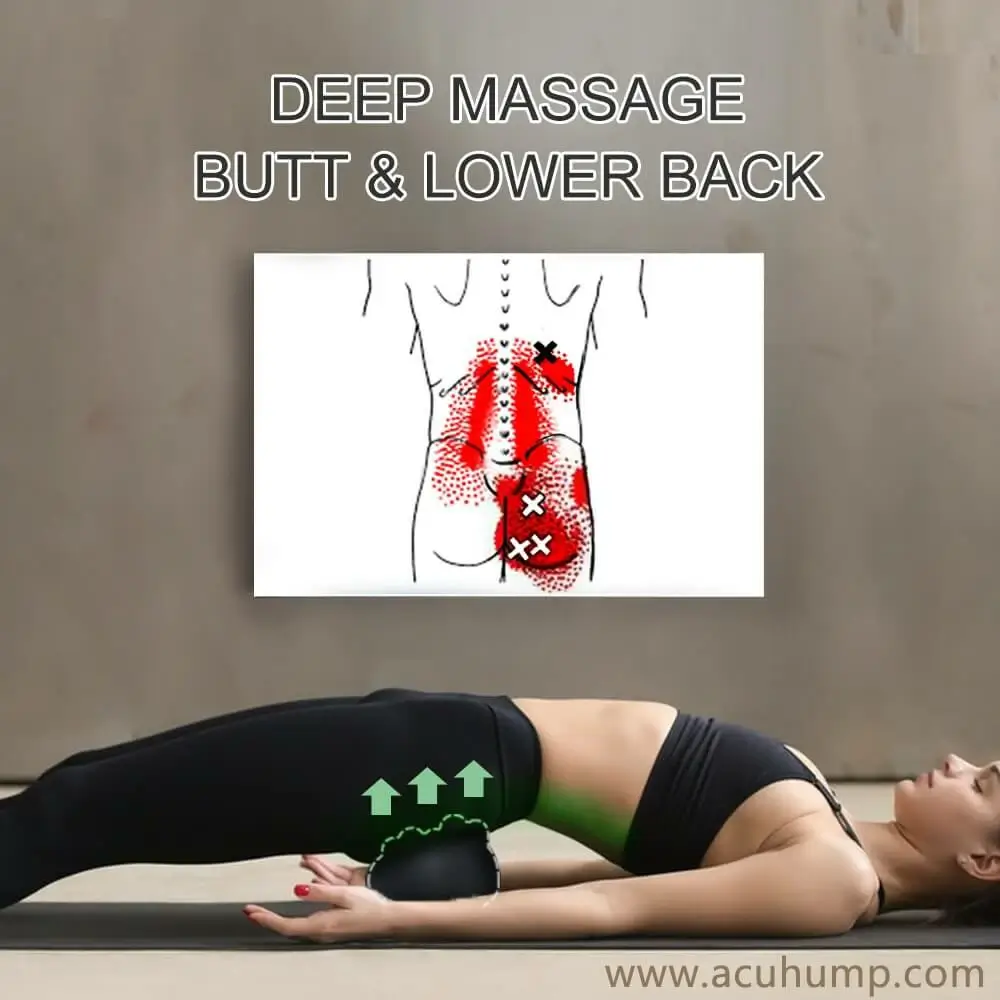
Acu-hump: 30-day return policy. No risk for you.
The Acu-hump’s contours and strategically placed pressure points simulate the techniques used in acupressure massage, targeting areas of tension and promoting relaxation along the sciatic nerve pathway.
By embracing the Acu-hump, you can harness the power of acupressure massage and stretching techniques simultaneously, enhancing your sciatica pain management regimen.
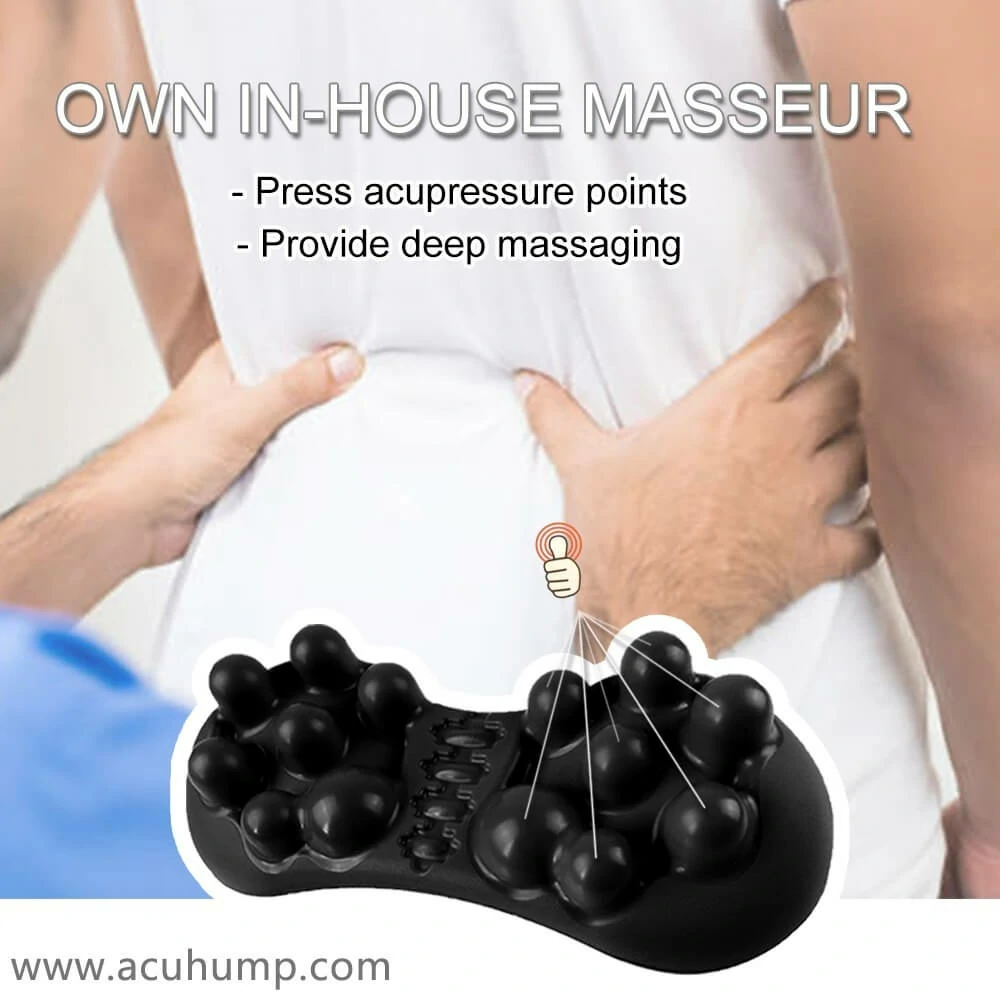
Acu-hump: Full refund policy. No risk for you.
Chiropractic Care
Chiropractic adjustments focus on aligning the spine and relieving pressure on nerves, potentially easing sciatic nerve irritation. Chiropractors use hands-on techniques to manipulate the spine and promote optimal nerve function.
These alternative therapies can amplify the effects of the aforementioned methods, fostering a multidimensional approach to sciatica pain management. Combining conventional treatments with alternative therapies can offer a well-rounded strategy tailored to your individual needs. However, it’s crucial to consult with your healthcare provider before embarking on any new therapeutic approach, ensuring that they align with your overall treatment plan and medical history.
Prevention Tips
Shielding yourself from the discomfort involves embracing proactive habits that prioritize spinal health and overall well-being:
- Regular Exercise: Engaging in a consistent exercise regimen that encompasses both cardiovascular workouts and strength training can foster robust muscles and support the spine. Exercises targeting the core, lower back, and hips contribute to enhanced stability and flexibility, relieve sciatica pain.
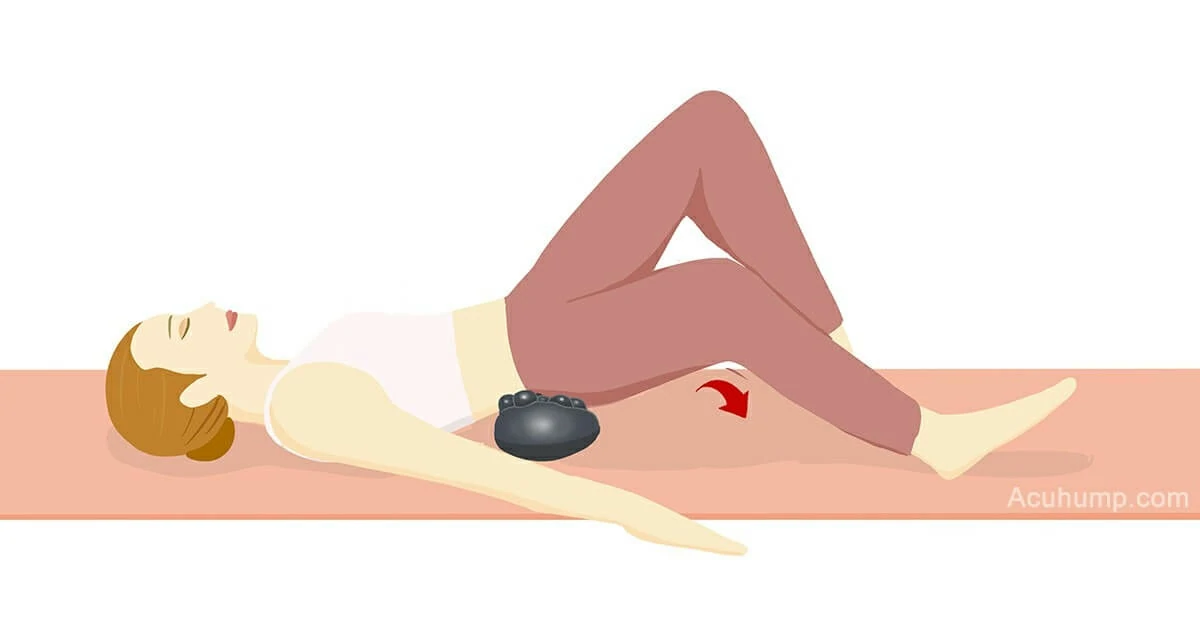
- Proper Lifting Techniques: Whether you’re at the gym or performing everyday tasks, mastering proper lifting techniques is crucial. Bend your knees, engage your core muscles, and avoid straining your back when lifting heavy objects. Implementing these techniques safeguards against sudden pressure on the spine that could trigger sciatica pain.
- Maintaining a Healthy Weight: A balanced diet and regular physical activity play a pivotal role in managing body weight. Excess weight can exert undue stress on the spine and sciatic nerve, elevating the likelihood of pain. By achieving and sustaining a healthy weight range, you can reduce the strain on your lower back and mitigate the risk of developing sciatica.
By internalizing and integrating these prevention tips into your daily routine, you establish a foundation for preserving spinal health and minimizing the potential for sciatica pain. Consistency in exercise, diligence in proper techniques, and a commitment to a healthy lifestyle collectively contribute to your overall well-being, allowing you to relish life’s pursuits without the interruption.
Now that you’re equipped with these easy ways to relieve sciatica pain, it’s time to take action and reclaim your groove! And guess what? We have the perfect tool to help you on your journey – the Acu-hump!
This fantastic device can provide relief not only for sciatica pain but also for muscle pain in the buttocks and lower back.
So, why wait?
Click here to purchase your very own Acu-hump and relieve sciatica pain for good!
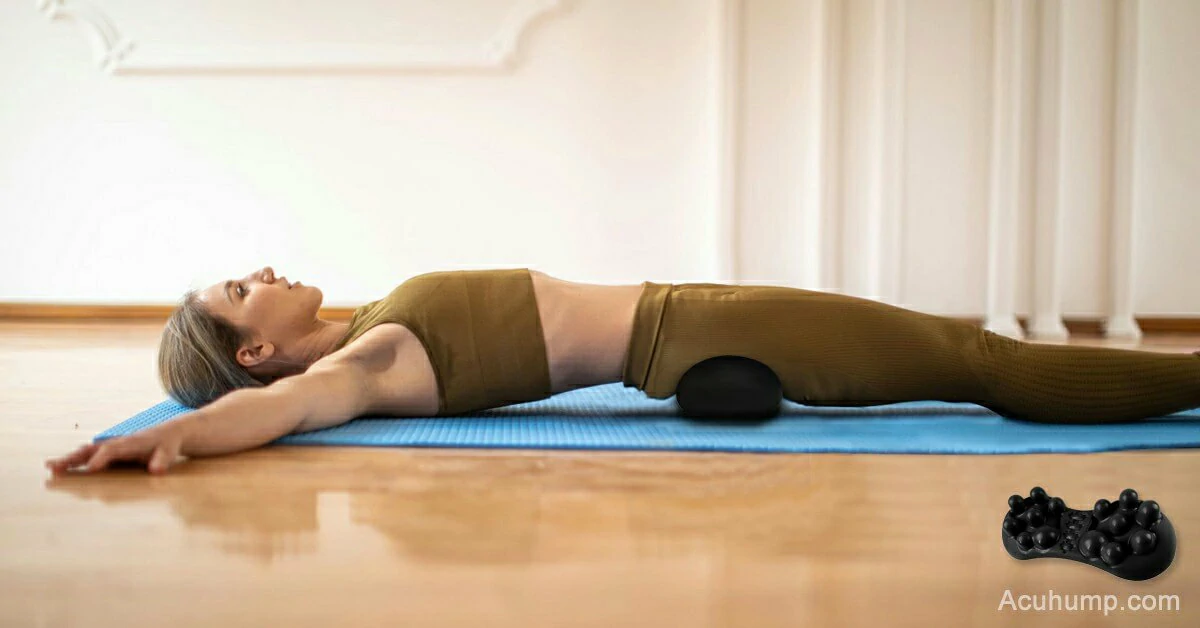
Acu-hump®
Release Butt & Lower Back

Ok, so I’ve had this thing since October. I was a little intimidated to try it. Now I’m kicking myself for staring at it for 6 months! …
You can use it while on the floor, a bed or couch depending on your preferences and the amount of stability you want or can take…
But for myself, I IMMEDIATELY felt putting it on my lower back/hip area is going to be my sweet spot! Just 20 seconds of use, I felt so much better! The tension in my lower back was released enough where I could tell right away. I can’t wait to see how good I feel when I get my time laying on it up to 10 minutes…

I deal with sciatica and back pain. I’ve used several stretching devices for my back and always wished I could use them on my lower back and hips more. So, this is perfect. The one side with larger “nubs” is a little painful if you’re sore but does work well to work out any knots or trigger points. The other side is gentler and provides a really good stretch for this area. I will continue using it to stretch and relieve tension. I can’t say it’s fixed it, but it certainly will help!
